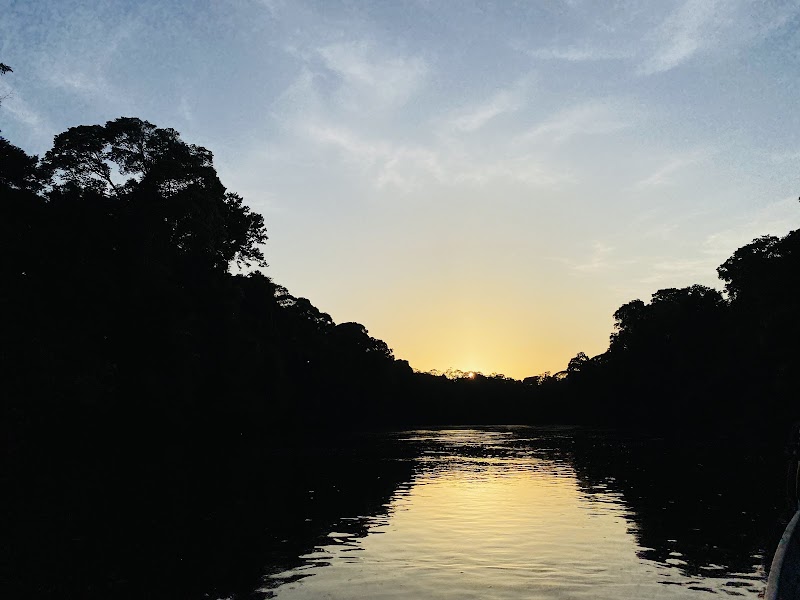Navigating the Wild: Trails and Ecosystems of Nouragues Nature Reserve, French Guiana
The Nouragues Nature Reserve, located near Cayenne in French Guiana, offers a gripping adventure through untouched Amazonian rainforest. Discover diverse ecosystems and dynamic landscapes along trails that challenge and reward those prepared to engage with this thriving wilderness.
Start Early to Beat Heat and Insects
Begin your hike at dawn or early morning to avoid midday tropical heat and intense insect activity, making the trail more comfortable and safer.
Wear Trail-Ready Footwear
Select sturdy hiking shoes or boots with good grip and ankle support to navigate slippery roots and muddy sections common in rainforest terrain.
Bring a Refillable Hydration System
Humidity and exertion demand constant hydration; carry a refillable water container and purifying tablets as clean sources may be limited on longer routes.
Pack Lightweight Rain Gear
Tropical showers can arrive suddenly—carry a packable rain jacket to stay dry without overheating on the trail.
Navigating the Wild: Trails and Ecosystems of Nouragues Nature Reserve, French Guiana
From the edge of Cayenne, a journey into the Nouragues Nature Reserve invites hikers to step into a richly charged environment where the forest and river vie for your attention. This protected reserve covers roughly 100,000 hectares of untouched Amazonian rainforest, teeming with life molded by water, soil, and sunlight. The trails here are equal parts invitation and challenge, winding through dense canopy and crossing streams that dare you to keep pace. Prepare for roughly 10 to 15 kilometers of trails with moderate elevation changes, mostly under thick forest cover that filters tropical light into deep emerald shades.
The terrain shifts from soft, leaf-littered earth to roots and rocks that push you to watch each step. Early mornings or late afternoons bring a cooler breeze and the forest’s chorus—calling birds, distant howler monkeys, and the rustle of unseen creatures—offering a sensory immersion. Along these paths, ecosystems change fluidly: lowland rainforest segments give way to riverine habitats where the Nouragues River boldly curves and cuts through. The river doesn’t just accompany you; it challenges your rhythm with sudden currents and the persistent hum of life it supports.
Practical preparation is key. Footwear with solid grip and ankle support will help navigate slippery roots and occasional muddy patches, while a hydration system is essential in this humid climate. Start early to avoid midday heat and insect activity peaks. Carrying insect repellent and a lightweight rain jacket prepares you for sudden tropical showers common in this equatorial environment.
The reserve’s significance extends beyond the trail: it’s a living laboratory for biodiversity with species found nowhere else. Pay attention to shifting colors as the flora adapts along water edges or rocky outcrops. Rest points offer quiet views where sunlight spills through the canopy, highlighting orchids clinging to thick branches or fleeting glimpses of the iridescent blue morpho butterfly.
Engaging with Nouragues means respecting its fierce independence. It’s not a place to rush or overpower but to match step with its rhythms and surprises. Paths here tell a story of resilience—water carving the land, plants reclaiming spaces, animals asserting presence. This hike delivers more than scenery; it gives a direct link to one of the planet’s most vital and dynamic ecosystems, ready for those prepared to listen, observe, and move deliberately.
Nearby Trips
All Adventures
Boat Charters
Water Activities
Adventures near Cayenne
Discover the unique and memorable adventures that make Cayenne special.
Frequently Asked Questions
How do I access Nouragues Nature Reserve from Cayenne?
The reserve is accessible via river taxi or organized tours from Cayenne. There are no roads directly connecting the city to Nouragues, so plan to arrange transport by boat or guided expedition.
Are the trails suitable for beginners?
Trails vary but generally demand moderate fitness due to uneven, root-covered paths and occasional river crossings. Beginners can enjoy shorter walks but should be prepared for wet, slippery conditions.
What wildlife might I see during the hike?
Expect to encounter diverse species including howler monkeys, poison dart frogs, blue morpho butterflies, and a variety of tropical birds. Early and late hikes increase chances to spot elusive creatures.
Is camping allowed inside the reserve?
Camping is highly regulated to protect sensitive ecosystems. Visitors should check with local authorities or reserve management to secure permits and understand designated camping zones.
What precautions should I take regarding insects?
Apply insect repellent regularly, wear long sleeves and pants to minimize exposed skin, and consider mosquito nets for resting areas, particularly to prevent mosquito-borne illnesses.
Can I hike the trails year-round?
While technically possible, the heaviest rains between December and March can make trails dangerous. The drier season from June to September is recommended for safer and more comfortable hiking.
Recommended Gear
Sturdy Waterproof Hiking Boots
Protects feet on wet and uneven terrain, supports ankles against roots and rocks.
Hydration Bladder or Water Bottles
Maintains hydration in humid heat; water purification tablets recommended for refills.
Lightweight Rain Jacket
Essential during rainy months to stay dry and prevent chills without adding bulk.
Insect Repellent
Keeps mosquitoes and other insects at bay, reducing risk of bites and discomfort.
Local Insights
Hidden Gems
- "La Roche Lacérée viewpoint offers panoramic forest and river views rarely visited by casual hikers."
- "Small ephemeral waterfalls appear off beaten paths during wet season, providing serene rest spots."
Wildlife
- "Watch for the golden-headed lion tamarin, a rare primate unique to this region."
- "Observe the giant river otters near calmer river bends at dawn or dusk."
History
"The Nouragues Reserve has been a focus for ecological research since the 1990s, serving as a base for scientists studying Amazonian biodiversity and ecosystem dynamics."
